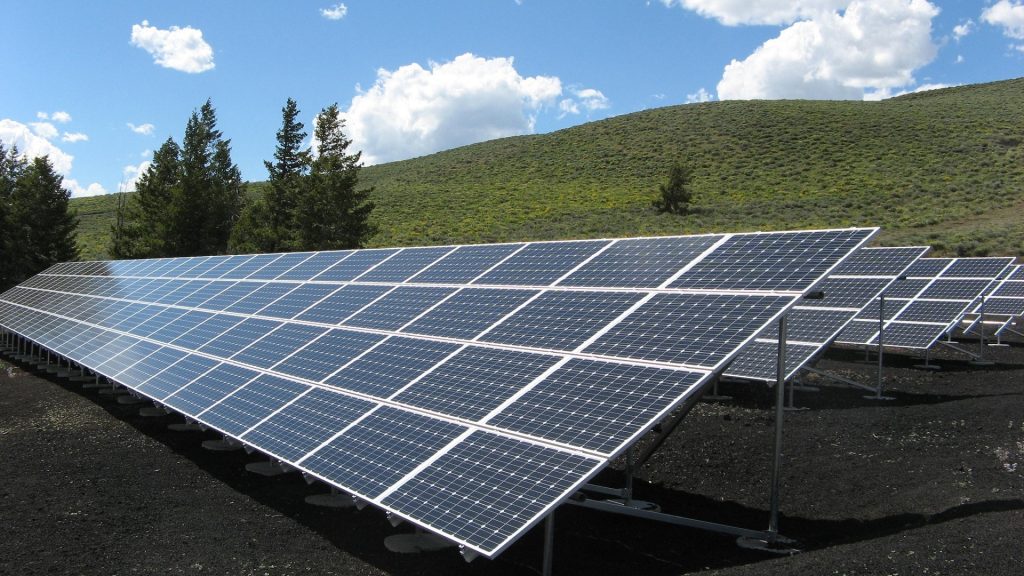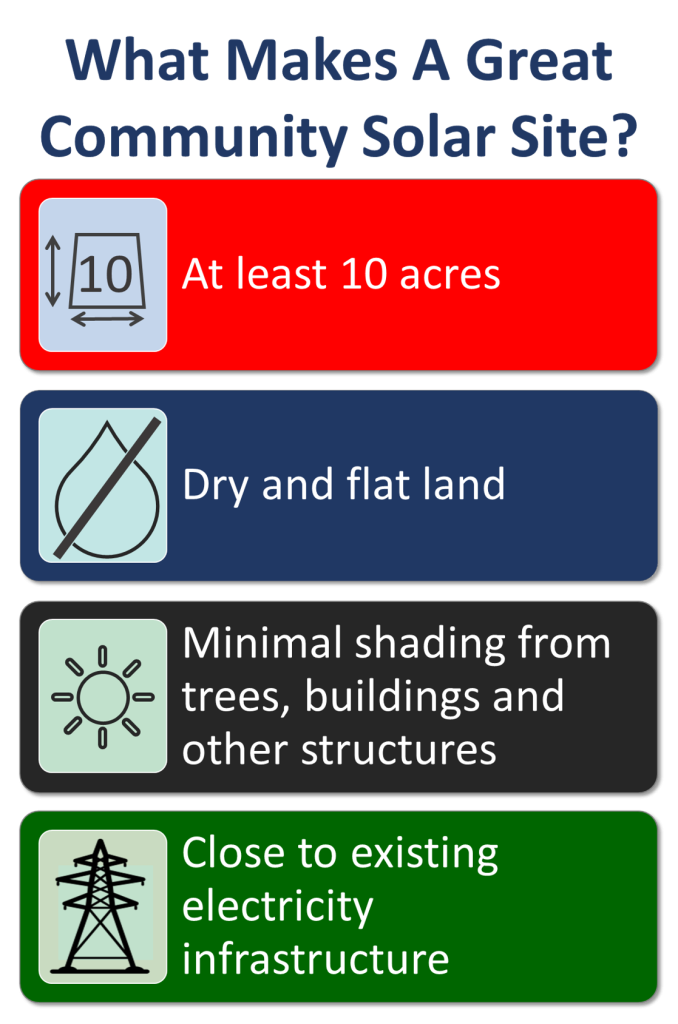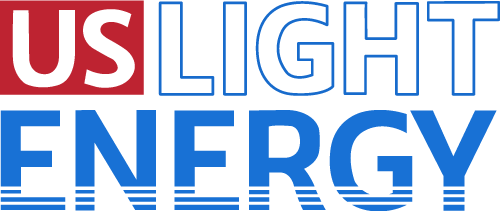
At U.S. Light Energy, we are consistently reviewing landowner submitted properties to see if they are viable candidates for a community solar project. As we review those, we consider a wide variety of factors, some of which can be difficult for landowners to gauge, like construction costs, zoning rules and potential system sizes. Others, however, are simple and easily understood, and landowners can quickly review them to better understand if a community solar farm may be a good fit for their land. Those factors include:
 Size
Size
A typical community solar site is at least 10 acres, and often as large as 40-50 acres. That means that the total amount of land available for the project, and not simply the entire property, should be at least 10 acres. If the landowner wants to preserve open space (such as for a yard or farmland), that space should be excluded from the land available for the project.
Topography
A potential site should be dry, flat and relatively cleared of trees. Uneven ground can cause shading and may make construction more difficult. Wetlands, streams, creek beds and marshes all pose their own unique obstacles, both in permitting and in construction.
Shading:
Trees, buildings and other structures may shade a solar project, reducing the project’s expected output. Removing too many trees may also cause erosion or water drainage issues later on Furthermore, most solar developers, including U.S. Light Energy, work hard to minimize their negative environmental impact, maximize their positive impact, reduce their carbon footprint, and fight climate change. Clearcutting a treed property runs counter to those goals.
Infrastructure:
A community solar site needs to be interconnected to the local power grid at a 3-phase electrical line, so proximity to 3-phase power is critical. Because we would need to build the infrastructure to make that connection, the closer a site is to 3-phase power, the lower construction costs will be, allowing for higher lease rates. Our team at U.S. Light Energy will assess the proximity to the nearest 3-phase electrical line when we analyze the property.
